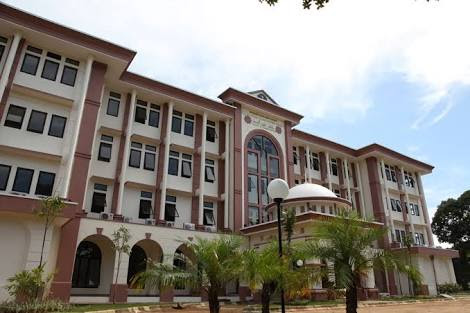DIAGNOSIS OF STUDENTS’ ERRORS IN FINDING AREAS BY INTEGRATION
Abstract
This study aims to diagnose students' errors in finding the area using integration. Errors can be seen from the student completion steps that are not correct. This type of research is qualitative research. The applied instruments were diagnostic tests and interview guidelines. The subjects consisted of Universitas Muhammadiyah Parepare students from Mathematics Education Study Program. Then, the researchers selected three subjects from 23 subjects that committed various errors. The results showed that the errors were: (1) Conceptual error, (a) substitution errors for the lower bound and upper bound, (b) misunderstanding in drawing the graph of a function. (2) Procedural errors dealing with incorrect calculation operation. (3) Final solution errors dealing with incapability to find the accurate answers based on the questions. Therefore, it is necessary to diagnose errors made by students using integration to calculate the area so that for lecturers, it becomes a reference to minimize errors made by students and find solutions for the mistakes made.Downloads
References
Afifah, D. S. N., Ilman, M., & Putri, I. M. (2018). Analisis kesalahan mahasiswa dalam menyelesaikan soal kalkulus peubah banyak. MaPan : Jurnal Matematika Dan Pembelajaran, 6(2), 207–220. https://doi.org/10.24252/mapan.2018v6n2a7.
Amelia, S., & Yadrika, G. (2019). Analisis kesalahan siswa SMA dalam menyelesaikan soal integral. Jurnal Ilmiah Dikdaya, 9(1), 124–131. https://dx.doi.org/10.33087/dikdaya.v9i1.132.
Dane, A., Cetin, O. F., Bas, F., & Sagirli, M. O. (2016). A conceptual and procedural research on the hierarchical structure of mathematics emerging in the minds of university students: An example of limit-continuity-integral-derivative. International Journal of Higher Education, 5(2), 82–91. https://doi.org/10.5430/ijhe.v5n2p82.
Husni. (2020). The effect of inquiry-based learning on religious subjects learning activities: An experimental study in high schools. Jurnal Penelitian Pendidikan Islam, 8(1), 43–54. https://doi.org/10.36667/jppi.v8i1.434.
Laurens, T., Batlolona, F. A., Batlolona, J. R., & Leasa, M. (2018). How does realistic mathematics education (RME) improve students’ mathematics cognitive achievement? EURASIA Journal of Mathematics, Science and Technology Education, 14(2), 569–578. https://doi.org/10.12973/ejmste/ 76959.
Mendezabal, M. J. N., & Tindowen, D. J. C. (2018). Improving students’ attitude, cenceptual understanding and procedural skills in differential calculus through microsoft mathematics. Journal of Technology and Science Education, 8(4), 385–397. https://doi.org/10.3926/jotse.356.
Nursyahidah, F., & Albab, I. U. (2017). Investigating student difficulties on integral calculus based on critical thinking aspects. Jurnal Riset Pendidikan Matematika, 4(2), 211–218. https://doi.org/10.21831/jrpm.v4i2.15507.
Onyema, E. M., Eucheria, N. C., Obafemi, F. A., Sen, S., Atonye, F. G., Sharma, A., & Alsayed, A. O. (2020). Impact of coronavirus pandemic on education. Journal of Education and Practice, 11(13), 108–121. https://doi.org/10.7176/JEP/11-13-12.
Serhan, D. (2015). Students’ understanding of the definite integral concept. IJRES: International Journal of Research in Education and Science, 1(1), 84–88. Retrieved from https://files.eric.ed.gov/fulltext/EJ1105099.pdf.
Sholihah, U., & Maryono. (2020). Students’ visual thinking ability in solving the integral problem. Journal of Research and Advances in Mathematics Education, 5(2), 175–186. https://doi.org/10.23917/jramathedu.v5i2.10286.
Sholihah, U., & Mubarok, D. A. (2016). Analisis pemahaman integral taktentu berdasarkan teori apos (action, process, object, scheme) pada mahasiswa tadris matematika (TMT) IAIN Tulungagung. Cendekia Jurnal Kependidikan Dan Kemasyarakatan, 14(1), 123–136. https://doi.org/10.21154/cendekia.v14i1.620.
Siregar, H. M., & Solfitri, T. (2019). An analysis of students’ errors in solving indefinite integral problems viewed from gender differences. Journal of Research on Mathematics Instruction, 1(1), 17–24. Retrieved from https://jrmi.ejournal.unri.ac.id/index.php/jrmi/article/view/12.
Solfitri, T., Kartini, Siregar, H. M., & Syari, R. (2019). The analysis of students’ errors in using integration techniques. Proceeding of the SS9 & 3rd URICES, 328–335. Pekan Baru.
Sugiyono. (2019). Metode penelitian pendidikan. Bandung: Alfabeta.
Syafmen, W. (2015). Identifikasi kesalahan siswa dalam menyelesaikan soal matematika di SMA (studi kasus SMAN 11 Kota Jambi). Kreatif, 17(3).
Widoyoko, E. P. (2014). Penilaian hasil belajar di sekolah. Yogyakarta: Pustaka belajar.
Copyright (c) 2021 Nurhasanah, Asdar Dollo

This work is licensed under a Creative Commons Attribution 4.0 International License.

